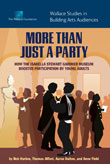 |
Building Arts Audiences Getting more people to experience more art more deeply is the work of 54 Wallace Excellence Award winners. This series explores the audience-building efforts of four arts groups. |
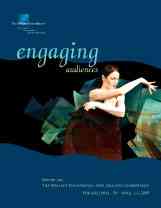 |
Engaging Artists Building arts audiences is important even in tough economic times. That was the message at a conference of 50 arts organizations that received Wallace Excellence Awards to make arts a bigger part of people’s lives. Conference speakers described efforts to build participation by means including conducting market research, “re-branding” and drawing lessons from professional sports. |
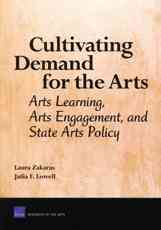 |
Cultivating Demand for the Arts: Arts Learning, Arts Engagement, and State Arts Policy This RAND Corporation report argues that reversing declining participation in the arts will require more and better arts education, because those who experience the arts as children are more likely to pursue the arts as adults. The Wallace-commissioned report is the second in a series of four taking a “big picture” look at state arts agencies. |
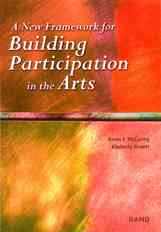 |
A New Framework for Building Participation in the Arts This landmark RAND Corporation study offers arts organizations a way to avoid hit-and-miss efforts at audience building that waste scarce resources. It suggests that building arts participation refers to one or more of three activities: “broadening” audiences (increasing their size); “deepening” them (enriching the experience of current participants); or “diversifying” them (bringing new groups into the fold). |
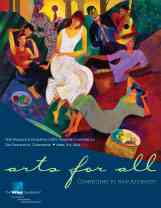 |
Arts for All: Connecting to New Audiences A Wallace conference gathering of 200 arts providers and other experts yielded rich insights about three ways that arts groups can widen their audiences: improving their marketing, using technology and undertaking audience research. |
 |
Getting In On the Act: How Arts Groups are Creating Opportunities for Active Participation is a new study commissioned by The James Irvine Foundation and conducted by WolfBrown. It draws insights from more than 100 nonprofit arts groups and other experts in the U.S., U.K. and Australia. The report presents a new model for understanding levels of arts engagement as well as case studies of participatory arts in practice. It also addresses many of the concerns that arts organizations may have in supporting participatory arts practices and provides inspiration and ideas for exploring this growing trend. |
An ArtsJournal Discussion | Jan. 23-27, 2012
Copyright © 2024 · News Child Theme on Genesis Framework · WordPress · Log in







The Participatory Museum (2010, 388 page book) is available for free here: http://www.participatorymuseum.org